Q
how to start perodua bezza
Honda's Civic Type R, that iconic high-performance front-wheel-drive hot hatch, has truly upped its game with the latest FL5 generation. Under the hood lies a 2.0-liter VTEC turbocharged engine, cranking out a healthy 315 horsepower and 420 Nm of torque. Paired with a slick 6-speed manual gearbox, it rockets from 0-100km/h in a claimed 5.7 seconds and tops out at an electronically-limited 275km/h. That's some serious firepower, placing it right at the sharp end of Malaysia's hot hatch segment.
But the FL5 isn't just about straight-line speed. It's carved its name into the record books at the Nürburgring Nordschleife, setting a blistering front-wheel-drive lap time of 7 minutes 44.88 seconds – a testament to its razor-sharp handling and overall dynamic prowess.
Now, for Malaysian enthusiasts, the Civic Type R does come with a premium price tag – we're looking at around RM300,000 for the locally-assembled version. But here's the thing: it perfectly blends that race-bred DNA with everyday usability, a combo that has performance car lovers absolutely smitten. Sure, rivals like the Volkswagen Golf R and Hyundai i30 N are nipping at its heels, but the Civic Type R holds its ground with that unmistakable VTEC soundtrack and the solid reputation Honda has built up here in Malaysia.
If you're lucky enough to get your hands on one of these, a quick tip for Malaysian owners: regular maintenance is key, folks. Keep a close eye on the turbo system and cooling components especially – our local tropical heat can be pretty unforgiving on high-performance machinery, and you'll want to keep that Type R running sweet.
Special Disclaimer: This content is published by users and does not represent the views or position of PCauto.
Related Q&A
Q
What Segment is Perodua Bezza?
The Perodua Bezza is a four - door sedan in the A - segment. It is mainly targeted at entry - level buyers in the mid - to low - price range in the Malaysian market, emphasizing affordability and low fuel consumption. Its body size (with an overall length of 4,150 mm) is smaller than that of B - segment sedans like the Toyota Vios and Honda City. However, it has an edge in price, starting from around RM34,000, which meets the local consumers' demand for a cost - effective commuter car.
Despite its relatively small size, the Bezza still offers engine options of 1.0L (1KR - VE) and 1.3L (1NR - VE), making it suitable for city commuting. It is easier to handle and park on congested roads, such as those in the Kuala Lumpur city center. Its competitors in the same segment include the Proton Saga (an A - segment sedan), while the higher - end B - segment market is occupied by Perodua's own Aruz (an SUV) and Daihatsu/Toyota models.
Although it may not stand out in terms of size and power, the Bezza remains one of the best - selling A - segment sedans in Malaysia, thanks to its low maintenance costs and the high resale value of the Perodua brand.
Q
What is the Reslae Value of Perodua Bezza?
As one of the most popular entry-level sedans in Malaysia, the Perodua Bezza has a relatively stable performance in terms of second-hand resale value. This is mainly due to the brand's high market share, low maintenance costs, and reliable durability. According to industry data, the average residual value rate of the Bezza is about 60% - 65% after three years of use, and it can still maintain 45% - 50% after five years. The specific price depends on the vehicle's condition, mileage, configuration (such as a 1.0L or 1.3L engine), and service records. It is recommended to have regular maintenance at Perodua-authorized service centers and keep complete receipts to increase the residual value.
The factors affecting second-hand cars also include changes in market demand. For example, models with outstanding fuel economy are more favored during oil price fluctuations. The Bezza's fuel-efficient characteristic (the combined fuel consumption of the 1.0L model is about 4.2L/100km) further strengthens its competitiveness in the second-hand market. If you plan to sell your car, you can compare real-time quotes on second-hand car platforms such as Carlist or MyTukar, and adjust your expectations based on the car's body color (white and silver are more valuable) and additional configurations (such as original leather seats). At the same time, note that the Malaysian second-hand car market has a higher preference for automatic transmission models than manual ones.
In addition, Perodua's extensive dealer network and the convenience of parts supply also indirectly support the second-hand value of the Bezza, making it a practical choice for budget-conscious buyers.
Q
How Many CC is Perodua Bezza?
As one of the most popular entry-level sedans in Malaysia, the engine displacement of the Perodua Bezza varies according to different versions. Currently, it offers two options: 1.0-liter and 1.3-liter. Specifically, the 1.0G and 1.0X versions are equipped with a 998cc three-cylinder engine of the 1KR-VE model, while the 1.3L premium version uses a 1329cc four-cylinder engine of the 1NR-VE model. Both of these engines adopt the Dual VVT-i dual variable valve timing technology, which balances fuel economy and power performance, making them suitable for both city commuting and long-distance driving.
For Malaysian consumers, it's important to choose the engine displacement that suits their needs. The 1.0L version is more suitable for users with a limited budget who focus on fuel-saving, while the 1.3L version can provide more abundant power, especially suitable for situations where there are often passengers or hilly roads. It's worth mentioning that although engine displacement is one of the important indicators for measuring power, the actual driving experience is also affected by various factors such as gearbox tuning, vehicle weight, and aerodynamic design. It is recommended to take a test drive before buying a car to experience the differences between different versions. At the same time, also consider the daily usage scenarios and maintenance costs, so that you can select the most suitable car model for yourself.
Q
What is the Engine in Perodua Bezza?
The Perodua Bezza is equipped with two naturally aspirated engines, a 1.0-liter and a 1.3-liter one, named 1KR-VE and 1NR-VE respectively. Both of these engines feature the Dual VVT-i technology, which can offer more efficient fuel economy and smoother power output. The 1.0-liter engine has a maximum power of 51 kilowatts and a peak torque of 91 Newton-meters, making it ideal for city commuting. On the other hand, the 1.3-liter engine provides a higher power of 73 kilowatts and a torque of 121 Newton-meters, suitable for driving scenarios that require more power. Both engines are paired with either a 4-speed automatic or a 5-speed manual transmission to meet the needs of different drivers.
It's worth mentioning that the engine design of the Perodua Bezza focuses on durability and low maintenance costs, which are well-suited to the road conditions and climate in Malaysia. Meanwhile, its fuel efficiency also meets the local consumers' expectations for an economical sedan. The Bezza is also equipped with an ECO driving mode, which further optimizes fuel consumption and helps owners save on expenses. For Malaysian consumers with limited budgets who still want a reliable means of transportation, the engine performance of the Bezza is definitely a great choice.
Q
What is the Gearbox Type of Perodua Bezza?
As a popular entry-level sedan in the Malaysian market, the Perodua Bezza currently offers two transmission options to meet the needs of different users. The 1.0-liter model is equipped with a traditional 4-speed automatic transmission (4AT), while the 1.3-liter model comes with a more advanced Dual-Mode CVT (Continuously Variable Transmission). This CVT transmission enhances driving pleasure by simulating seven virtual gears and also takes fuel economy into account. It's worth noting that the CVT transmission has become the preferred choice for many modern small cars thanks to its smooth shifting experience and optimized power transmission efficiency. On the other hand, the 4AT transmission stands out for its simple structure and low maintenance costs, making it suitable for consumers with limited budgets.
Given the hilly and congested road conditions in Malaysia, both transmissions of the Bezza have undergone local tuning. The 1.3L CVT version is particularly well-suited for stop-and-go driving situations. Its hill-hold assist function also provides additional safety in hill towns like Penang or Cameron Highlands. Whether you're a user who values economy or one who pursues driving comfort, you can find a suitable option in Bezza's transmission configurations. This differentiated powertrain strategy also reflects Perodua's in - depth understanding of the diverse needs of Malaysian consumers.
Q
What is the PCD Size of Perodua Bezza?
The PCD (Pitch Circle Diameter) of the Perodua Bezza is 100mm. This means that the wheel hub bolt holes are distributed on a circle with a diameter of 100mm, usually paired with 4 bolt holes. This specification is compatible with many Perodua models and some models of other brands, making it convenient for car owners to replace or upgrade their wheels. PCD is one of the important parameters for wheel installation. Choosing the correct PCD size can ensure that the wheels match the vehicle perfectly and avoid vibrations or safety hazards during driving.
In addition to PCD, when replacing wheels, you also need to pay attention to the center bore diameter (CB) and offset (ET value). These parameters together determine whether the wheels are suitable for your vehicle. If you plan to replace the wheels of your Bezza, it is recommended to choose accessories that match the original factory specifications or are professionally certified to ensure driving safety.
Moreover, in Malaysia's wet and rainy climate, choosing reliable - quality wheels can effectively prevent rust and deformation and extend their service life. If you have more questions about wheel upgrades, you can consult professional car modification shops or Perodua - authorized service centers. They can provide more detailed advice and services.
Q
Does Perodua Bezza Have Apple Carplay?
As one of the most popular entry - level sedans in Malaysia, the Perodua Bezza doesn't come with Apple CarPlay as a standard feature across all its models. Its infotainment system mainly supports basic functions like Bluetooth connection, USB playback, and radio. If users want to connect their smartphones, they can achieve audio transmission through Bluetooth pairing.
However, in recent years, the demand for Apple CarPlay and Android Auto in the Malaysian market has increased significantly. Many car owners can have a compatible main unit installed at third - party modification shops to get this function. But it should be noted that modification may affect the original factory warranty terms.
It's worth mentioning that some competitors in the same class, such as the Proton Saga, already offer Apple CarPlay in their high - end versions, which reflects consumers' emphasis on intelligent connectivity features.
It is recommended that potential car buyers who have a strong demand for this function consult Perodua authorized dealers about future model update plans or compare the configuration differences among different brands. At the same time, car owners are reminded to choose certified modification service providers to ensure system stability and driving safety.
Q
What is the Tyre Brand of Perodua Bezza?
The tire brands that come standard on the Perodua Bezza vary depending on different models and years. Common configurations include the Silverstone Kruizer NS800 (for the entry - level version) or the Bridgestone Ecopia EP300 (for the high - end version), which are both popular in the local market. These two tire models are designed with a focus on economy, practicality, and low rolling resistance, fitting well with the positioning of the Bezza as an economy - class sedan.
As a local Malaysian brand, Silverstone has been locally tuned for better performance on wet roads and durability. On the other hand, the Bridgestone Ecopia series emphasizes energy - saving and quietness, making it a great choice for users who often drive long distances.
It's worth noting that the tire specifications are usually 165/55 R15 (for 1.0L models) or 185/55 R15 (for 1.3L models). When replacing tires, car owners can refer to the manual to select products of the same grade. It is recommended to check the tire pressure and tread depth every six months. Since tires wear out relatively quickly in tropical climates, special attention should be paid to the drainage performance after two years of use or 40,000 kilometers of driving.
If you plan to upgrade your tires, you can consider models like the Michelin Energy XM2+ or Continental CC6, which are known for their excellent wet - grip performance. However, you need to confirm the compatibility with the wheels. The price of tires in the original size usually ranges from RM150 to RM300. When making a selection, be sure to check the DOT certification and the production date (the four - digit number on the tire sidewall, such as 2523, indicates that the tire was produced in the 25th week of 2023).
Q
Is Perodua Bezza a Good Car? Learn the Pros and Cons Here
As one of the best-selling entry-level sedans in Malaysia, the Perodua Bezza is indeed an economical choice suitable for local consumers. Its advantages include the excellent fuel efficiency (with an official figure of up to 22 km/L) brought by the class-leading 1.0L and 1.3L Dual VVT-i engines, the smooth performance when paired with a 4AT gearbox, and a trunk volume of up to 508L, which is very suitable for daily family use. In addition, the standard dual airbags, ABS + EBD, and ISOFIX child seat interfaces across the entire range also show the emphasis on safety. The affordable price (starting at around RM34,000) due to local assembly and Perodua's extensive service network are also significant advantages.
However, it should be noted that its interior uses a lot of hard plastics to control costs. The sound insulation is just average when driving at high speeds, and the entire range is not equipped with an Electronic Stability Control (ESC) system. If the budget allows, it is advisable to consider installing third - party sound - insulation materials. Competitors in the same class, such as the Proton Saga, have different focuses in terms of configuration. It is recommended that consumers take test drives and make comparisons based on their own needs. It's worth noting that Malaysia's hot and rainy climate requires a high level of vehicle maintenance. Regularly checking the air - conditioning system and chassis rust prevention can extend the vehicle's lifespan. Overall, the Bezza is a practical choice that lives up to its price point.
Q
What is the Width of Perodua Bezza?
The body width of the Perodua Bezza is 1,620 millimeters. This dimension is at a moderate level among B - class sedans in Malaysia. It can provide sufficient seating space and is also suitable for flexible maneuvering in the city. As Perodua's first three - box sedan, the design of the Bezza takes both practicality and fuel economy into account. Its body width, combined with a height of 1,515 millimeters and a wheelbase of 2,450 millimeters, ensures the comfort of rear - seat passengers. Meanwhile, the trunk volume reaches 508 liters, meeting the daily needs of a family. In the rainy and hot climate conditions of Malaysia, the body dimensions of the Bezza also take aerodynamics and heat dissipation efficiency into consideration. Paired with two efficient engines of 1.0L and 1.3L, it's suitable for local road conditions. For consumers considering buying an economical sedan, the body width is one of the key factors affecting parking convenience and interior space. It is recommended to take a test drive on the spot to experience the driving vision and handling feeling. At the same time, compare it with models in the same class, such as the Proton Saga, which has a width of 1,689 millimeters, and make a choice based on personal needs.
Latest Q&A
Q
how to reduce fuel consumption
If you want to cut down on fuel use, start with your driving habits. Avoid jackrabbit starts and sudden stops—stick to a steady speed instead. All that constant accelerating and braking guzzles gas, so when you're on the highway, cruise control is your best friend for maintaining a consistent pace.
Next, regular vehicle maintenance is a must. Swap out your air filter, spark plugs, and engine oil as scheduled to keep the engine running in top shape. Don't forget to check your tire pressure too—keep it at the manufacturer's recommended level. Underinflated tires create more rolling resistance, which means more fuel burned.
Also, lighten the load. Clean out that trunk—all the stuff you never use just adds weight. If you're not using roof racks, take them off. They create extra wind drag and add unnecessary heft, both of which hurt fuel economy.
In Malaysia's hot weather, AC is non-negotiable, but you can use it smarter. Don't crank the temperature way down; set it to a comfortable level. When parking, try to find a shaded spot or use a sunshade to keep the interior from turning into an oven. That way, the AC won't have to work as hard to cool things down.
Another fuel-saver: plan your routes to avoid peak traffic jams. Sitting idle or crawling along in stop-and-go traffic kills fuel efficiency.
If you're thinking about a new car, hybrid or fuel-efficient models are worth a look. The tech is pretty mature in Malaysia now, and they can save you big on fuel costs over time.
Lastly, use good-quality fuel and stick to the octane rating recommended by the manufacturer. It helps the engine run more efficiently.
Put all these tips together, and you'll not only slash your fuel bills but also help your car last longer.
Q
how to calculate fuel consumption per km malaysia
Figuring out your car's fuel consumption per kilometer in Malaysia is pretty straightforward. Here's how you do it: First, fill your tank right up until the pump auto - clicks off, and jot down your odometer reading. Then, drive around as you normally would for a bit. Once you're ready, fill it up again to the same auto - shutoff point. Note: how many liters you put in the second time and how many kilometers you've covered since the first fill. To get your fuel consumption in liters per 100 kilometers, just take the number of liters you added the second time, divide it by the kilometers driven, and then multiply that result by 100. If you want to know the cost per kilometer, take that liters/100km figure, multiply it by the current fuel price (like RM2.05 per liter for RON95), and then divide by 100.
Now, it's important to remember that fuel economy can take a big hit from a few key things. Your driving style is a big one – sudden acceleration and abrupt braking can guzzle up to 20% more fuel. Then there's the road conditions – traffic - jammed city streets will burn about 30% more gas than cruising down the highway. Running the air - conditioner at its maximum setting continuously can increase the engine load by approximately 10%. And don't forget about weight – every extra 100kg in the car can bump up fuel use by around 5%.
To keep things running as efficiently as possible, it's a good idea to check your tire pressure regularly – being 20% below the recommended pounds per square inch can increase fuel consumption by 3%. Also, make sure your air filter isn't clogged; a dirty one messes with combustion efficiency. On the tech side, some newer cars come with active grille shutters and auto start - stop systems, which can actually help cut fuel use by 5 - 8%. For the data geeks out there, you can hook up a fuel monitoring app to your car's OBD port to keep an eye on real - time consumption.
Q
how to calculate co2 emissions from fuel consumption
Figuring out how much CO₂ your fuel use pumps out is actually pretty straightforward with this simple formula: CO₂ emissions (in kilograms) = fuel consumption (in liters) × the fuel's CO₂ emission factor. Here in Malaysia, common gasoline like RON95 has an emission factor of roughly 2.3kg per liter, while diesel comes in a bit higher at around 2.7kg per liter. Let's put that into perspective – say your car burns 8 liters of RON95 to cover 100km; that means your CO₂ output is 8 × 2.3 = 18.4kg for that trip.
But fuel type isn't the only player here. Your driving habits and how well you maintain your car make a big difference too. Jackrabbit starts and slamming on the brakes? That's just wasting fuel and cranking up emissions. On the flip side, keeping your engine tuned up regularly and making sure your tires are properly inflated can boost fuel efficiency, which in turn cuts down on emissions.
The Malaysian government is also doing its part by promoting EEV (Energy Efficient Vehicle) policies and encouraging the adoption of hybrid or electric vehicles to reduce overall carbon emissions. Understanding all this not only helps you calculate your own emissions but also empowers you to drive more eco-consciously.
Q
how to improve fuel consumption
Malaysian car owners looking to boost fuel efficiency can start with their driving habits, vehicle maintenance, and daily usage details. First off, adopt a smooth driving style – skip the sudden acceleration and harsh braking. All that constant mashing of the gas and slamming on the brakes guzzles more fuel. On the highway, cruise control is your friend to keep a steady speed.
Next, regular vehicle maintenance is non-negotiable. Swap out the air filter, spark plugs, and engine oil as scheduled to keep the engine running at its peak. And don’t forget to check tire pressure – underinflated tires create more rolling resistance, which means higher fuel consumption.
Also, lighten the load. Clear out that trunk clutter you never use – the heavier the car, the more fuel it burns. With Malaysia’s scorching weather, use the AC wisely: roll down the windows at low speeds, but switch to AC on the highway to cut wind resistance.
Oh, and go for quality fuel – and avoid idling for ages. For those really serious about long-term fuel savings? Consider a hybrid or an eco-friendly model. They’re built with fuel efficiency tech that’s perfect for city driving.
Bottom line: tweak your driving habits and stay on top of maintenance, and you’ll see a real difference in fuel economy – plus, you’ll be doing your bit for the environment too.
Q
how to save fuel consumption
In Malaysia, saving fuel starts with three key areas: your driving habits, how you maintain your car, and smart use of technology. First off, drive smoothly—avoid jackrabbit starts and sudden braking. Make good use of cruise control on the highway, and try to keep your speed between 90-110 km/h. Going too fast or too slow both guzzle more fuel.
Next, regular car maintenance is a must. Keep your tires properly inflated, use low-viscosity engine oil, and clean or replace your air filter regularly. All these little things help your engine run more efficiently. Also, lighten the load—ditch the roof rack if you’re not using it (it adds wind resistance!), and for short trips, maybe carpool or take public transport instead.
If you’re really serious about cutting fuel costs, consider a hybrid or eco-friendly model. Their energy recovery systems can seriously slash fuel use. And let’s not forget Malaysia’s heat—AC is a must, but set it around 24°C and use sunshades to reduce the load. Oh, and fuel quality matters too—stick to reputable stations with the right octane rating for your car.
Looking ahead, electric vehicles might have a higher upfront cost, but charging is way cheaper than petrol. They’re definitely worth considering as a long-term fuel-saving option.
View MoreRelated News
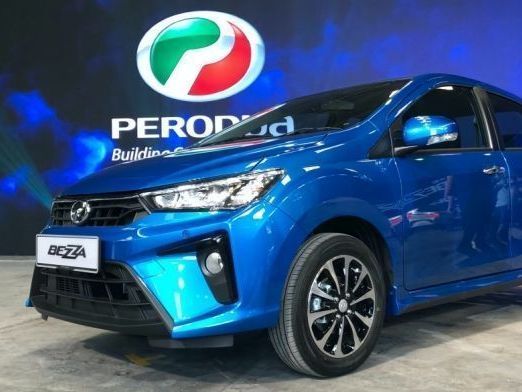
All-New Perodua Bezza Coming 2025: Built on Advanced DNGA Platform
LienJun 4, 2025
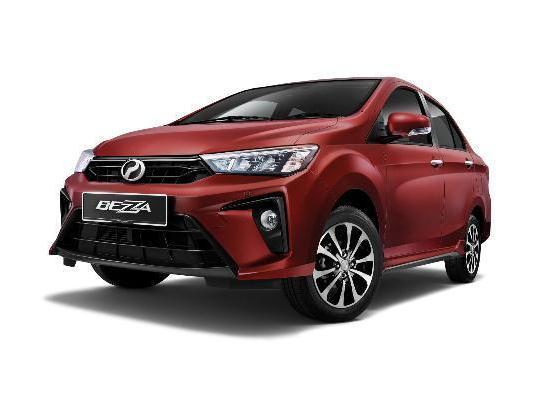
How Much is the Perodua Bezza? Tips for Purchase and Cost-effectivness
LienMar 25, 2025
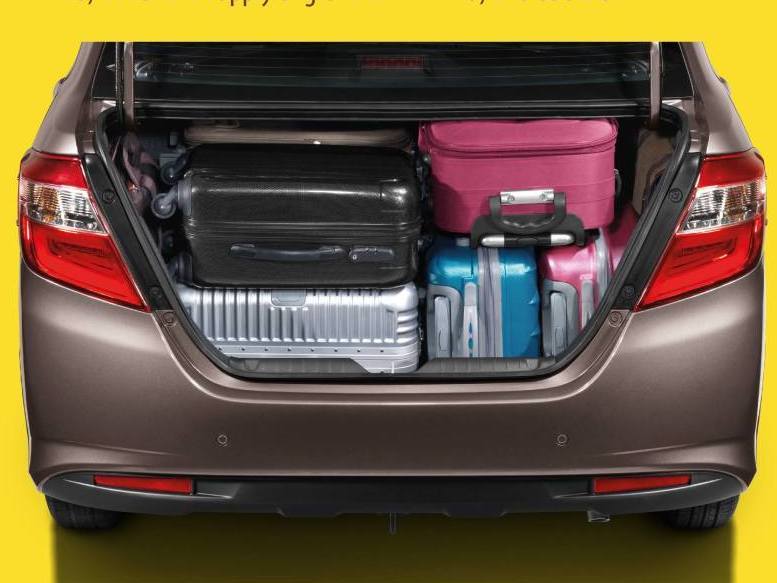
How big is the boot space of Bezza actually?
MichaelMar 12, 2025
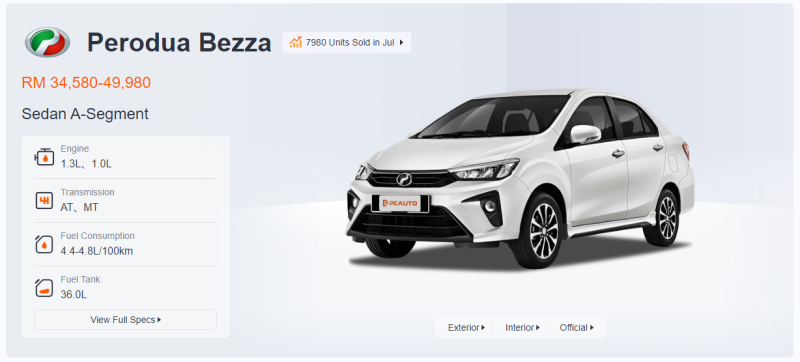
Perodua Bezza is the best-selling, do consumers value fuel consumption or price?
MichaelSep 30, 2024
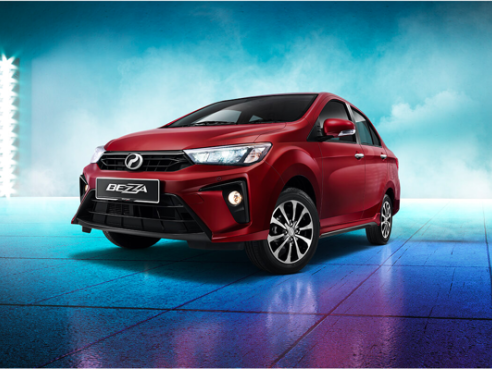
Priced from RM 34,580, is Perodua Bezza the top choice for entry-level sedans in Malaysia?
LienJun 13, 2024
View More


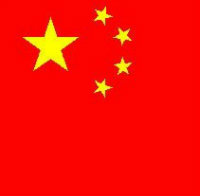









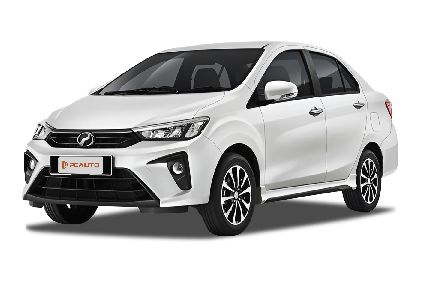




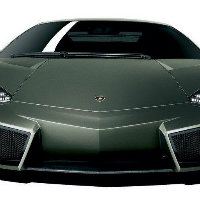
Pros
Cons